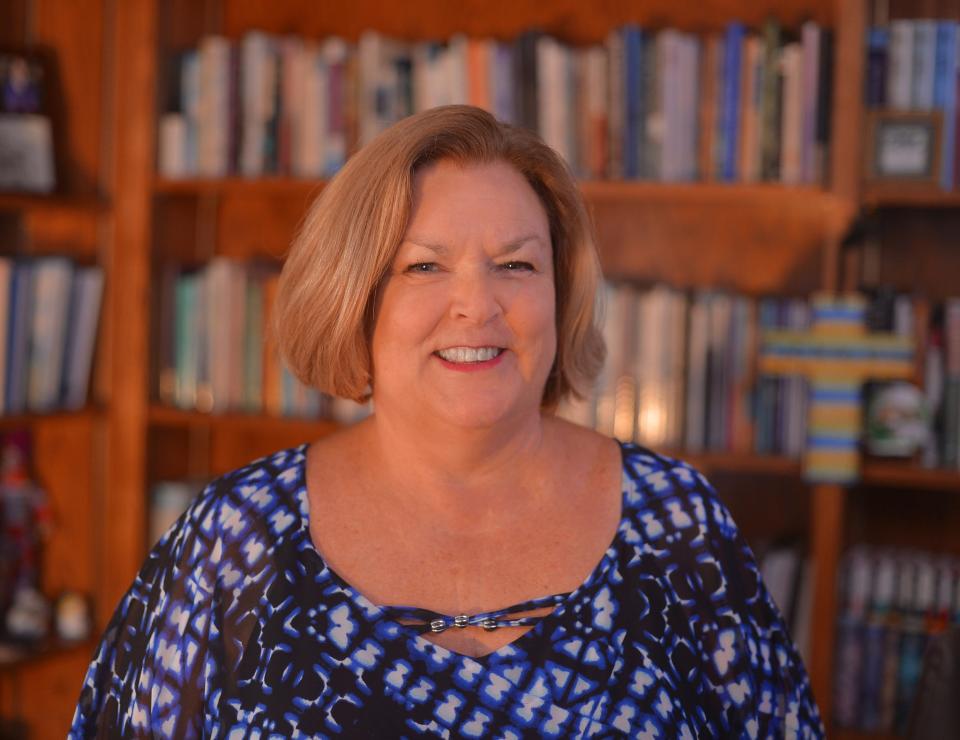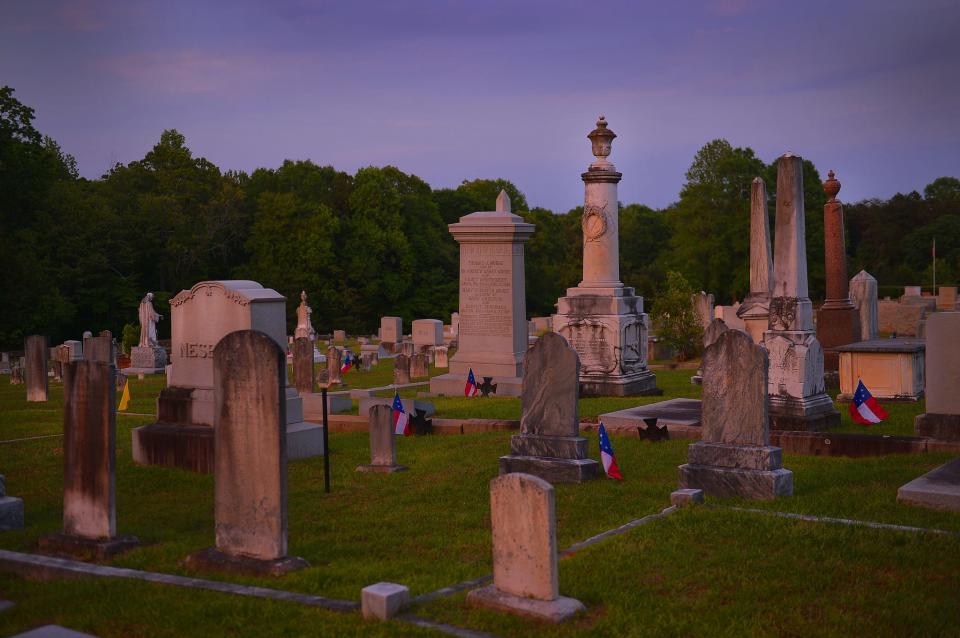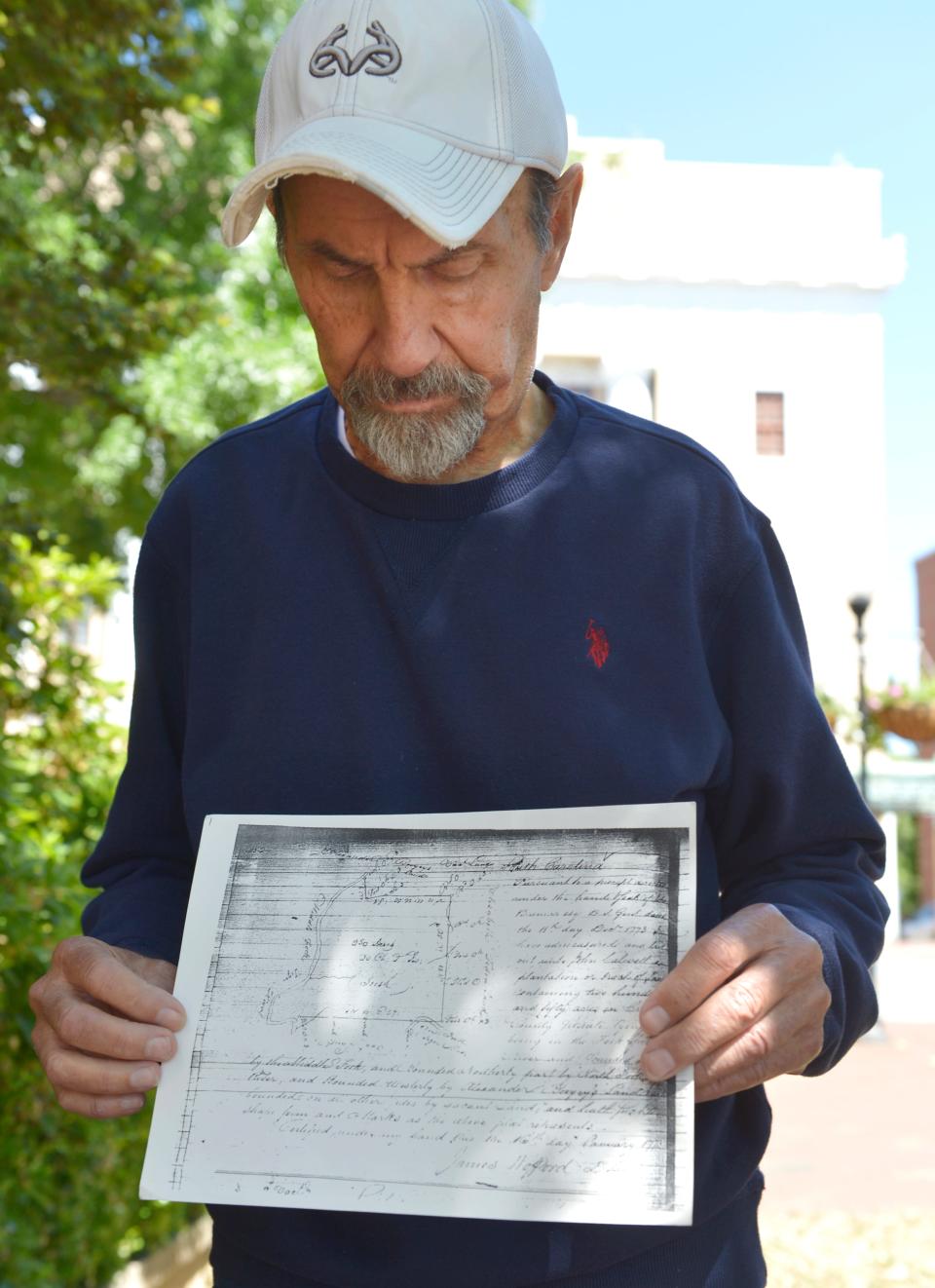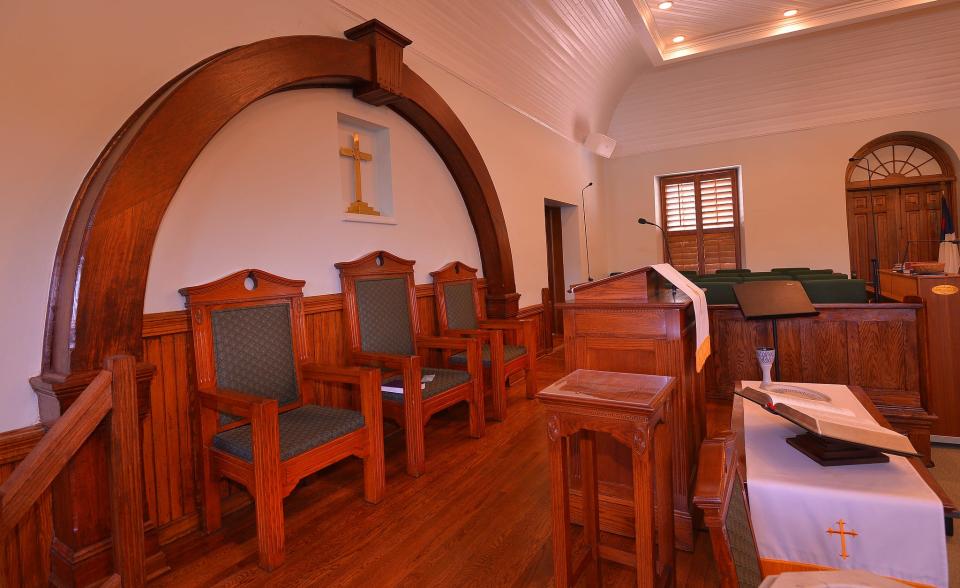Moore’s Nazareth Presbyterian Church celebrates 250 years, role in county history
Before there was a city of Spartanburg, before there was a Spartanburg County, before there was a United States of America, there was a log meeting-house in this place where people gathered to worship.
Those concise and fundamental words are in the opening paragraph of the small brochure, "A Short History of Nazareth Presbyterian," “the mother” of all Presbyterian churches in what-is-now Spartanburg County.
Those words also set the stage for the Moore church’s 250th anniversary to be celebrated Saturday, May 21, with a morning and afternoon of public activities that will include tours of the who’s who in the cemetery, presentations by guest speakers and former pastors, traditional music, children’s crafts and re-enactments of what life was like during the Revolutionary War.
“The Church is the foundation of the Upstate’s culture,” church member and one of the event’s organizers Mike Baier said. “It was the gathering place for so many in an untamed wilderness. It continues to unite people of like minds. Christ and the church are the glue that held and continues to hold people together in the community. Since Nazareth is the ‘Mother Church’ to at least 10 other congregations, its roots spread much further than what first meets the eye.”
The history of Nazareth Presbyterian Church

Nazareth Presbyterian Church started when European settlers began to create homesteads along the branches of the Tyger River on land that belonged to the Cherokee Indians around 1755-1761. At that time, what would one day be Spartanburg was just a small part of the vast British-claimed, Craven County.
Scot-Irish families came from Pennsylvania to settle in the fertile farmlands. Other families came directly from Ireland by way of Charles Towne (Charleston). These families formed the Tyger River Congregation, which at first met in their homes to worship. The story goes that needing a place to build a church, one man from the northern part of the settlement and another from the southern end began walking toward each other. They met at what was to be known as the Meeting House Spring that is still gurgling today.
The first of three church buildings was built there near the spring. Officially, the church was established in 1765 and formally organized in 1772. The first house of worship was a log structure. Between 1785 and 1790, a larger church was built, which was used until the current one was built in 1832.

The current church was built with handmade bricks from the sun-dried mud of the Middle Tyger River, wood from local forests and field stones from cleared land. Those stones are seen today as a low-rock wall that surrounds much of the noted cemetery. Within that rock wall, you’ll find grave markers with the names of prominent families who are still with us today: Reid, Wakefield, Anderson, Moore and Caldwell, to name a few.
At the center of the grounds is the historic sanctuary with attached newer buildings for Sunday school, administration and a large family life center. The sprawling cemetery in the back goes as far as the eye can see.
Today, the simple but sturdy sanctuary seats the congregation facing the east. However, for exact reasons lost to time, the directional orientation of the building was changed around the turn of the 20th century: from northeast to southeast. Thus, the original entrance to the sanctuary became a side door, and a side door became the main entrance.
On the inside, the pulpit and pews also changed to their position on the compass. Baier, the Rev. Julie Shaaf and church historian Caroll Caldwell believe the change was made to accommodate changing attitudes toward segregating men from women and Black people from white people.
“Throughout our history, we seem to be a group of worshipers who are willing to meet in the middle — or at least in recent history,” Shaaf said. “Throughout wars, political issues, and denominational divisions, the Nazareth Church has sought to fulfill the Great Commission of Jesus Christ. Also, some very forward thinkers, years ago, decided not to place the sanctuary, built in 1832, on the National Historic Registry. This has enabled the congregation to update the building for sound, safety and other practical purposes while maintaining its history. Therefore, we remain tied to our history but ready to grow into the future, while serving in the present.”

Caldwell carries dates, names and places in his head, like a personal computer accessing a database of information. His place in the church dates back seven generations, when his great, great, great, great grandfather was granted 250 acres of land in 1772.
“God gave me the opportunity to carry on this history,” Caldwell said on a recent spring morning, sitting in one of the church’s Sunday school classrooms. “It’s not an obligation but it’s sharing, to enjoy and appreciate, and to carry it on. I feel a comfortable presence here. You know the people you worship with here, a connection to our ancestors’ history.”
Caldwell said more than 100 of his family members are buried at Nazareth Presbyterian, and when his day comes, “I’ll be out here with my ancestors."
Despite its illustrious past, Nazareth Presbyterian has never been a big church. The sanctuary seats about 300 worshipers, and the current congregation is about 230. In contrast, there are about 2,450 identifiable graves in the 6.5-acre cemetery with room for about 670 more in the current well-kept grounds. It is believed that up to 100 graves in the original space are unmarked.
Celebrate with Nazareth Presbyterian Church

Saturday, May 21, celebratory activities start at 9:30 a.m. with a meet-and-greet.
At 10 a.m., there will be an historical presentation of the church in the sanctuary with overflow in the Fellowship Hall. This will include a welcome from Rev. Schaaf, the Governor’s proclamation to be read by S.C. Rep. Rita Allison, comments by former pastors Tom Malone and Mark Durrett, and music. While adults are learning about the history, children can make period crafts in the Family Life Center.
At 11:15 a.m., there will be guided tours of the church and the cemetery and Revolutionary War re-enactors. After lunch, the activities wind down with traditional hymn singing and closing comments in the sanctuary.
From 2 to 3 p.m., guests are invited to tour the cemetery at their own pace.
Sunday, May 22, Schaaf will preach a special sermon starting at 10:30 a.m. It will include bagpipe music and an anthem by Heather Sorenson, composed for the occasion.
“Church is the people, not the building,” Caldwell said. “But the presence of God is here.”
This article originally appeared on Herald-Journal: Moore’s Nazareth Presbyterian Church celebrates 250 years of history

